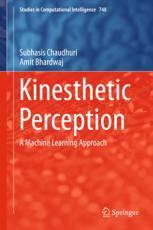

Most ebook files are in PDF format, so you can easily read them using various software such as Foxit Reader or directly on the Google Chrome browser.
Some ebook files are released by publishers in other formats such as .awz, .mobi, .epub, .fb2, etc. You may need to install specific software to read these formats on mobile/PC, such as Calibre.
Please read the tutorial at this link: https://ebookbell.com/faq
We offer FREE conversion to the popular formats you request; however, this may take some time. Therefore, right after payment, please email us, and we will try to provide the service as quickly as possible.
For some exceptional file formats or broken links (if any), please refrain from opening any disputes. Instead, email us first, and we will try to assist within a maximum of 6 hours.
EbookBell Team

5.0
108 reviewsThis book focuses on the study of possible adaptive sampling mechanisms for haptic data compression aimed at applications like tele-operations and tele-surgery. Demonstrating that the selection of the perceptual dead zones is a non-trivial problem, it presents an exposition of various issues that researchers must consider while designing compression algorithms based on just noticeable difference (JND). The book begins by identifying perceptually adaptive sampling strategies for 1-D haptic signals, and goes on to extend the findings on multidimensional signals to study directional sensitivity, if any. The book also discusses the effect of the rate of change of kinesthetic stimuli on the JND, temporal resolution for the perceivability of kinesthetic force stimuli, dependence of kinesthetic perception on the task being performed, the sequential effect on kinesthetic perception, and, correspondingly, on the perceptual dead zone. Offering a valuable resource for researchers, professionals, and graduate students working on haptics and machine perception studies, the book can also support interdisciplinary work focused on automation in surgery.